Maximizing Profits with High-Ticket Affiliate Marketing: The Psychology, Strategy, and Systems of 5-Figure Commissions
04.04.2025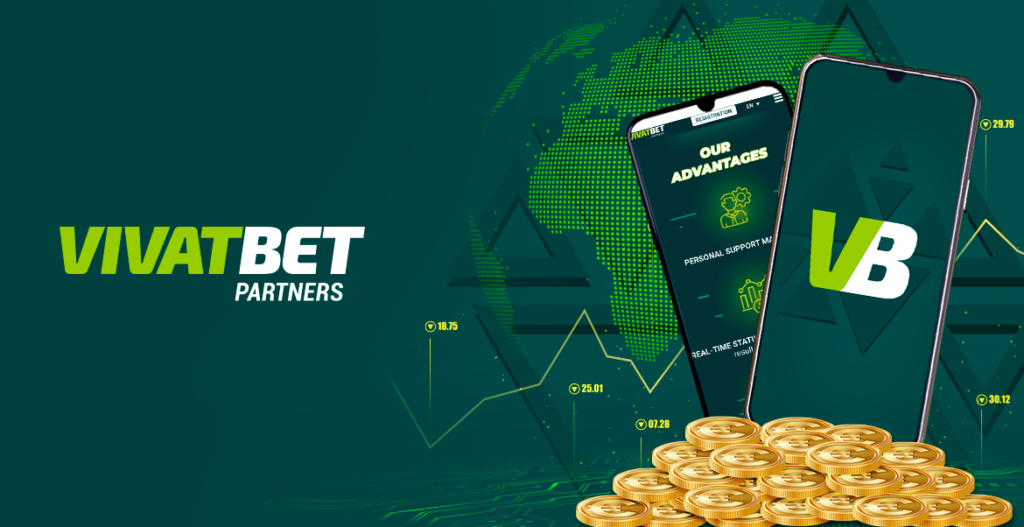
Maximizing Profits with High-Ticket Affiliate Marketing: The Psychology, Strategy, and Systems of 5-Figure Commissions
04.04.2025Most people try affiliate marketing to earn online. But many quit too soon. They promote cheap products. They make small commissions. It feels like progress, but it’s not real growth.
If you want real income, you need a better way. High-ticket affiliate marketing is that way. It’s not about selling more. It’s about selling smarter. Let’s explore why low-ticket offers keep you stuck and what to do instead.
Beyond the Click — Why Low-Ticket Affiliates Stay Broke
Your website should clearly show the potential of your affiliate marketing business. Highlight the services you offer and how they help users succeed. Use smart strategies to build trust, drive traffic, and convert visitors into high-ticket buyers.
The $15 vs $1500 Sale
Imagine this. You promote a $30 product. You get a $15 commission. You work hard to make one sale. Now imagine another offer. It’s a $3000 course. One sale gives you $1500.
Both took time. Both took effort. But one changes your week. The other changes your coffee budget.
“Easy to Sell” Is Not Always “Worth Selling”
Cheap offers look simple. People think, “It’s only $30, they’ll buy it.” That sounds good. But most people still say no. And you need many yeses to earn anything.
A high-ticket product needs trust. But if you build it once, it pays big. One sale = real money. That’s worth your time.
Small Wins Can Trick You
A $10 win feels nice. It tells you, “You’re doing something right.” But 10 wins still only give you $100. You stay busy. You feel productive. But you stay stuck.
These small wins are like sugar. Quick highs. No real growth. You need deep wins. That’s where affiliate marketing high-ticket comes in.
Let’s Do the Math
You want to make $10,000. With $20 commissions, you need 500 sales. That’s 500 people who say “yes.” That’s hundreds of hours posting, emailing, or running ads. Now flip it.
With $1000 commissions, you only need 10 sales. Same $10,000 goal. But less stress. Fewer people. More time for life. The numbers don’t lie. Low-ticket is a race. High-ticket is a leap.
The High-Ticket Shift — Reprogramming Your Mind for Big Commissions
Many people fail before they even start. Not because they’re lazy. But because they don’t believe they can sell high-ticket products. They think it’s too hard. They think no one will buy.
So they play it safe. They promote cheap items. But this mindset keeps them small. To grow, you must change the way you think.
“I Wouldn’t Buy It” — A Common Mistake
A big block is this thought: “I wouldn’t spend $2000 on a course, so why would someone else?” This is a trap. You are not your customer.
Some people spend $2000 easily. They want speed, results, and value. Your job is not to judge the price. Your job is to find people who want the result.
Price is Not the Same as Value
A product can cost a lot and still be a great deal. Let’s say a course helps someone make $10,000. Even if it costs $2000, that’s still a win. That’s real value.
Buyers think about results, not just price. If the outcome is worth it, they will buy. Show them how your offer helps. That’s how you sell high-ticket.
Shift from Scarcity to Growth
Scarcity thinking says, “Money is tight. No one will buy this.” Growth thinking says, “People invest in what they value. I can show them why this matters.” You don’t need everyone to buy. You just need a few right people. Think big. Believe in your offer. That mindset shift changes everything.
The 4 Core Assets of a High-Ticket Affiliate System
If you want to earn big commissions, you need a system. Not just links. Not just posts. A real system that works while you sleep. Here are the four main parts.
Asset 1: Personal Authority — Be a Mini Brand, Not Just a Profile
People don’t trust strangers with $1000+. They buy from people they know and respect. That’s why you need to become a “mini brand.”
This doesn’t mean becoming famous. It means showing your face, your voice, your value. Share your journey. Teach what you learn. Be real. Be clear. Be helpful. That builds trust.
You are not just another profile. You are a guide. Show people you know where you’re going.
Asset 2: Trust Machines — Build Connection on Autopilot
Most people won’t buy on the first click. That’s normal. But if you stay in touch, they come back. This is where automation helps.
Use email. Use messages. Set up a follow-up system. Share stories. Answer questions. Give tips. Show results. This is how you build trust without doing it all by hand. Let the system do the heavy lifting, while you focus on big moves.
Asset 3: Value Stack — Sell the Change, Not the Product
Don’t sell tools. Sell transformation. People don’t want a course. They want a better life. A better job. More freedom. That’s what they really buy.
Explain what your offer can change. Show how their life gets better. Break it into steps. Add bonuses. Share examples. Make it clear: “This will help you win.” The more they see the value, the easier the sale.
Asset 4: Traffic Control — Own the Message Everywhere
You need people to see your message. But not just any people. The right people. On the right platforms. At the right time.
This is called traffic control. Post with purpose. Use content that fits your offer. Answer real problems. Be the signal in the noise. You don’t need to be everywhere. Just control how people see you. Tell your story, your way.
High-Ticket Affiliate Marketing in the Betting Industry
High ticket affiliate marketing is not limited to courses or tech tools—it also works in the betting world. Many online betting platforms offer VIP or high-roller programs, where affiliates can earn large commissions by referring high-value players. Instead of promoting basic sign-up bonuses, marketers can focus on attracting serious bettors who deposit large amounts and play regularly. These users bring long-term value to the platform, which means bigger payouts for affiliates. Top betting affiliate programs also provide advanced tracking tools, high revenue shares, and lifetime commissions for loyal players. Success in this niche depends on trust, clear content, and reaching the right audience. By creating quality reviews, guides, and comparison posts, you can build a system that attracts high-intent traffic. Betting is a competitive but rewarding space for affiliates ready to think big and focus on value, not volume.
The Invisible Sale — Mastering Pre-Frame and Buyer Psychology
Selling high-ticket items is not just about links or landing pages. It’s about the moment before the click. That’s where the sale begins. Smart marketers know this. They guide the buyer’s thinking before the pitch even starts. Let’s break down how it works.
The “90% Decision Is Made Before the Click” Principle
Most people make up their mind before they click your link. That means the real sale happens earlier. It happens in the post they read. The story they saw. The video they watched.
By the time someone clicks, they are already 90% sure. That last 10% just confirms what they feel. So if you focus only on your sales page, you’re too late. You must shape their thinking before they arrive there.
Use Stories to Attract High-Intent Traffic
Not all traffic is the same. Some people just browse. Others are ready to buy. Your goal is to attract the second group — people with a reason to act.
How? With stories. Stories do more than inform. They connect. They teach through emotion. A good story makes the reader say, “That’s me,” or, “I want that too.”
Use short posts, emails, or videos. Share wins, struggles, lessons. Show how the product helped someone just like them. When people see themselves in your story, they come in warm. Ready. Curious. That’s high-intent traffic.
Be a Consultant, Not a Salesperson
High-ticket buyers don’t want to be sold to. They want to feel seen. They want to feel understood. That’s why you must act like a guide, not a pusher.
A consultant listens. A consultant offers clarity. A consultant shows the best next step. Do the same.
Instead of saying, “Buy this now,” try, “Here’s why this helped me,” or “This might be what you’re looking for.” Ask questions. Speak like you’re helping, not closing. This small shift builds trust fast.
Polarity: Speak to the Right People, Not Everyone
Trying to please everyone is a trap. Your message becomes weak. It sounds like every other ad.
Instead, use polarity. Take a stand. Speak with boldness. Say what you believe. Push away people who aren’t a fit. Attract those who are.
Example:
- • Wrong – “This course is for everyone.”
- • Right – “This is for action-takers who are done playing small.”
The second line draws in strong leads. It filters out the rest. That’s how you find buyers, not browsers.
Conviction: People Feel What You Believe
If you don’t believe in what you sell, no one else will. Confidence matters. Not fake hype — real conviction. Show that you trust the product. Share why it works. Speak with energy and purpose.
Say, “I’ve used this. I believe in it. Here’s what changed for me.” People respond to certainty. Your belief makes them curious. Your clarity makes them confident.
Specificity: Be Clear, Not Clever
Big promises mean nothing without clear details. Don’t just say, “This will change your life.” Say how. Show numbers. Give timeframes. Share exact steps.
Example: Instead of “Learn to earn online,” say “Learn how I made $3000 in 30 days with 1 product and 1 hour per day.” Specifics stand out. They feel real. They make the offer feel possible.
Bring It All Together
Before someone clicks, they’ve already seen your message, your tone, your story. That’s where the real sale begins. Use stories, show belief, be bold, and speak with purpose. When you do this right, the sale feels easy. Natural. Almost invisible. That’s the power of pre-framing and buyer psychology.
Email Sequences That Sell $2K+ Offers Without Feeling Pushy
Selling expensive offers over email can feel scary. You don’t want to sound like a salesperson. You don’t want to annoy people. But good email sequences don’t feel pushy. They feel helpful. Let’s look at how you can write emails that build trust and sell high-ticket offers.
Big sales don’t start with big asks. They start with small steps. These are called micro-agreements. You ask for a click. Then a reply. Then a read. Each “yes” builds trust. Over time, the reader feels closer to you. They start to believe in your message. Don’t rush to sell. First, give value. Then ask for small actions. That’s how trust grows.
Most people build funnels that sell first, help later. That doesn’t work with high-ticket offers. Flip it. Help first. Teach something useful. Share a real win. Show them what’s possible before you ask them to buy anything. This is called the “reverse funnel.” You don’t push the product. You let the reader feel the value first. When they see it works, they want more. Then they’re ready to buy.
Use the 3-Email Framework: Story > Shift > Solution
You don’t need 20 emails to make a sale. You need 3 good ones.
Email 1: Story
Start with a real story. Make it personal. Show a problem. Show the struggle. Make the reader feel something. This builds connection.
Email 2: Shift
Show a mindset change. Something clicked. A lesson was learned. This helps the reader see a new way forward.
Email 3: Solution
Now offer the solution. Introducing the product. Share what it can do. Use simple words. Don’t hype it. Just explain it clearly.
Use Real Scarcity, Not Fake Timers
Scarcity works. But only when it’s honest. Fake countdowns make people lose trust.
Instead, use true urgency. Say:
- • “This group closes on Friday.”
- • “We only take 10 new clients this month.”
- • “The bonus ends after 48 hours.”
Be clear. Be kind. Let people know the deadline. But don’t scare them. Respect them.
What Makes This Work
These email sequences feel personal. They help first. They build trust. They speak to real problems. They don’t pressure. They guide. That’s why they work for $2K+ offers. People feel safe. They feel ready. And when they trust you, they buy.
The Psychology of Premium Buyers — Selling to the 1%
Not all buyers are the same. Premium buyers think differently. They don’t care about cheap deals. They care about results, speed, and trust. If you want to sell high-ticket offers, you need to understand how they think. Let’s look at what makes them say “yes.”
Discounts work for cheap products. But premium buyers don’t chase sales. A lower price doesn’t impress them. In fact, it can hurt trust. They may think the product is low quality.
Instead, show them the outcome. What will this offer help them achieve? Will it save time? Make money? Remove stress? That’s what they want to know. Sell the result, not the discount.
Buying a high-ticket product takes brain power. The more they think, the more tired they get. This is called decision fatigue. It can lead to “no.”
Your job is to reduce that stress. Make the path simple. Break things down. Answer the big questions early.
Use clear steps:
- 1. What it is
- 2. Why it works
- 3. How it helps
- 4. What to do next
When the path is easy, the choice feels safe. Testimonials are nice. But they’re short. They don’t give enough proof.
Case studies go deeper. They show the full story. The starting point. The action taken. The results. That’s what premium buyers want to see. Give real examples. Use numbers if you can. Show progress. It builds belief. It shows that your offer works for people like them.
Premium buyers think in terms of ROI — return on investment. They ask, “If I pay $2000, what do I get back?” This doesn’t always mean money. It can mean time saved. Better health. Less stress. More peace. But you must show the value clearly.
Speak their language. Say:
- • “You save 10+ hours a week.”
- • “You can charge more after this.”
- • “This system grows with your business.”
If they see the return, the price feels small.
Premium buyers want clarity, not discounts. They want proof, not promises. They want value, not hype. If you guide them with calm confidence and real stories, they will listen. Sell the result. Show the path. Prove the value. That’s how you win the 1%.
Final Framework — The 30/30/30 System to Hit $10K/Month
Success with high-ticket affiliate marketing programs is not luck. It comes from focus. From doing the right things in the right way. You don’t need to work more. You need to work smarter. This 30/30/30 system helps you do that.
30% on Authority and Positioning
First, build your presence. People need to see you as someone who knows what they’re talking about. Share your story. Show your values. Teach what you’ve learned.
This is not about being perfect. It’s about being real and clear. When people trust you, they listen.
30% on Messaging and Systems
Next, focus on how you speak and how you work. Your words matter. They should be simple, helpful, and honest.
Set up systems to save time. Emails. Funnels. Follow-ups. These tools work while you rest. They help you grow without burning out.
30% on Traffic and Connection
Now bring people in. Share your message where your audience is. Post on platforms. Talk to people. Answer questions. Be active and helpful. Connection builds trust. And trust leads to sales.
The Final 10%: Track, Refine, Scale
The last piece is tracking. Look at what works. Check what doesn’t. Make small changes. Then scale what brings results. This is where smart growth happens. You don’t guess — you learn and adjust.
Summary & Next Step
You now have the full picture. High-ticket affiliate success is not about luck or pushing. It’s about trust, value, and smart systems.
Here’s your next step: Use the 4-core asset checklist — authority, trust machines, value stack, and traffic control. Then, find one belief that’s holding you back. Maybe it’s “I can’t sell expensive offers” or “I’m not an expert.”
Write it down. Reframe it. Replace it with a stronger thought. That small change can start a big shift. Your system starts with one decision. Build it, test it, grow it — and the results will follow.
A good high-ticket affiliate program can help you earn big commissions with fewer sales. The key is choosing offers from trusted brands that solve real problems. Some of the best high-ticket affiliate marketing niches include finance, software, and online education. These areas attract serious buyers who are ready to invest in long-term value.
Recent posts
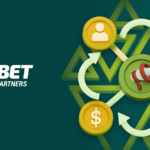
How to Negotiate Higher Affiliate Commissions in Finland — Data-Driven Strategies for Win-Win Deals
Negotiating higher commissions with affiliate programs in Finland works best when you use a structured, data-driven approach. The market is competitive, and affiliates who present…
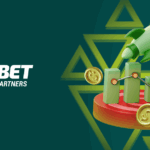
How to Build a Multi-Level Betting Affiliate Network — From Technical Setup to Performance Optimization
To make a big group of friends who sell for you in the casino you need to start well, see how good they do, and…
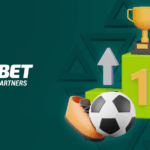
Top Sports Betting Affiliate Programs in Finland – Complete 2025 Guide
Finland rewards careful planning and clear user paths. Hockey and football spikes shape weekly intent across search and social. In this context, sports betting affiliate…
